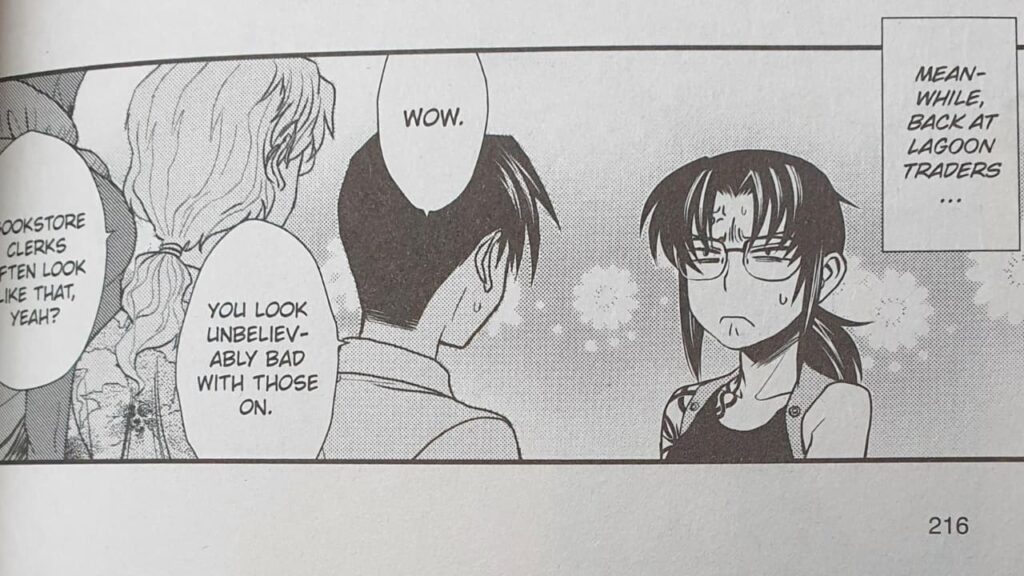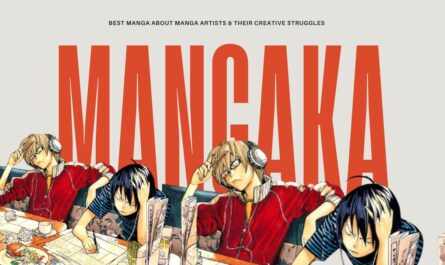How the creator of BLACK LAGOON turned his darkest moments into a roadmap for resilience—and what every creative (or professional) can learn.
Why Hiroe Rei’s Journey Matters
Imagine standing in a packed hall at AnimeJapan—thousands of fans cheering, cosplayers lining the aisles, and Hiroe Rei quietly stepping to the podium.
On the outside, he’s the mastermind behind BLACK LAGOON, a series that’s sold nearly 10 million copies and inspired anime, OVAs, novels, and more.
Inside, however, he’s carrying a weight few could fathom: a decade-long battle with depression that threatened to extinguish his creative spark.
Why pay attention? Because across industries, countless talented people face similar struggles—burnout, creative blocks, and the silent stigma that keeps them from seeking help.
Hiroe’s story shows that you don’t have to hit rock bottom to begin healing, and that even a fractured heart can learn to beat again.

The Long Silence of Black Lagoon: Inside Hiroe Rei’s 12-Year Hiatus
In a world where weekly deadlines can feel like a guillotine and creative spark often flickers in isolation, Hiroe Rei’s journey stands out as a testament to both the weight of fame and the fragile resilience of the human spirit.
Creator of the hit crime-action manga Black Lagoon, Rei vanished from serialization in mid-2010—right as his series was reaching its most pulse-pounding arc. What followed was a 12-year odyssey of depression, self-discovery, and gradual return, revealed in a stunningly candid interview with Comic Natalie.
This article expands on that conversation, weaving in emotional context, hard data, and actionable insights for anyone who’s ever felt creativity collide with despair.
Quick-Facts Sidebar
Series: Black Lagoon (2002–Present)
One-Shot Debut: April 2001 (Monthly Sunday Gene-X)
Serialization Launch: April 19, 2002 (Monthly Sunday Gene-X)
Tankōbon Volumes: 13 (as of December 19, 2023)
Total Sales: 9.8 million+ copies worldwide
Hiatus Begins: Mid-2010 (Roberta Revenge arc, Vols. 6–9)
Return Catalyst: Original anime Re:CREATORS (April 8–September 16, 2017)
Side-Arc Test: 341st Combat Team (Spring 2019)
English Vol.13: December 17, 2024 (Viz Media)
Timeline of Key Events
| Date | Milestone |
|---|---|
| April 2001 | One-shot published in Monthly Sunday Gene-X. |
| April 19, 2002 | Full serialization of Black Lagoon begins. |
| Mid-2010 | First major hiatus during the “Roberta Revenge” arc (Vols. 6–9). |
| 2011–2016 | Low-key side projects: doujinshi, novel illustrations, and interviews abroad. |
| April 8 – September 16, 2017 | Re:CREATORS anime airs—Rei writes story before drawing. |
| Spring 2019 | 341st Combat Team launches in Monthly Shōnen Sunday. |
| December 19, 2023 | 13th Japanese tankōbon volume released. |
| December 17, 2024 | Viz Media English Volume 13 scheduled. |
1. When the Gunshots Stopped: The Onset of Silence
During the fan-favorite “Roberta Revenge” arc—where the weaponized maid Roberta hunts down those who murdered her benefactor—Rei’s own world unraveled. Despite critical acclaim and skyrocketing sales, he faced an internal blockade. In the spring of 2010, his hands “refused” to draw:
“I don’t know the exact reason, but working on the manga was getting harder and harder, and it was getting harder to organize my thoughts. Even when I wanted to start the next task, my hands would stop. Before I even had the will to say, ‘I don’t want to draw,’ my hands had already stopped.”
Imagine crafting some of manga’s most kinetic action panels—and then waking up unable to lift your pen. Editor Natsume describes that moment with a haunting image:
“A rubber band that had been stretched to its fullest just snapped.”
That snap marked the start of silence—no new Black Lagoon chapters, no weekly deadlines, just an empty studio and a creator in crisis.
2. Hidden Battles: Depression Behind the Scenes
Rei’s collapse wasn’t a dramatic on-panel meltdown but a slow erosion of will. Layers of personal tragedy built beneath the excitement of his success:
- Family Grief: His father’s repeated hospital stays—and eventual passing—added emotional weight Rei couldn’t fully process.
- Creative Isolation: Long nights of redrawing pages left little room for real conversation or rest.
- Sensitivity as a Double-Edged Sword: Immersing himself deeply in characters meant their pain became his own.
“He immerses himself in his characters… that became a pain for him,” recalls Natsume.
Clinical depression set in, turning the act of drawing—once a source of pride—into an almost impossible chore.
3. Finding Shelter: Low-Pressure Outlets
Rather than disappear outright, Rei carved out safer spaces:
- Doujinshi Rehabilitation “The publication of a doujinshi is entirely my responsibility… I thought that if I was at that level, I might be able to get my hands moving, so I drew as a form of rehabilitation.”
- Illustration for Spinoff Novels
Reduced scope and deadlines turned illustration into a calming rhythm instead of a pressure cooker. - Global Panels & Interviews “When readers see me speaking at events… they think, ‘Oh, you’re doing fine.’ In my case… I just couldn’t sit down and draw manga.”
By stepping onto stages—from Tokyo to Los Angeles—Rei found human connection that drawing alone could not provide.

4. The Lifeline of Therapy & Medication
In the months that followed, Rei sought professional help:
- Therapy: Regular sessions helped him untangle the grief and perfectionism that tightened around him.
- Medication: Within two months, his darkest impulses receded.
“When my symptoms were at their worst… after taking medication, things gradually got better.”
“I feel really bad if I don’t take my medicine… If I take my medicine… I can work.”
Accepting medication as a tool—rather than a sign of weakness—proved crucial for sustaining his recovery.
5. Editor & Creator: A Partnership of Empathy
In a deadline-driven industry, Natsume’s unwavering understanding was rare:
“Whenever I have the chance, I tell my junior editors, ‘Please make an effort to take care of the writer’s health, including their mental health.’”
Their relationship blurred the line between professional and personal support:
“The more you’re alone, the more you’ll get sick. It’s important to have people around you…”
Together, they redefined what “editorial care” can look like—valuing humanity over speed.
6. Word First: Re:CREATORS as Catalyst
Abandoning the pen initially, Rei turned to words in 2017:
“I think… Re:CREATORS was the trigger that allowed Hiroe-sensei to return to the direction of creating things. Rather than drawing pictures, he started by writing the story in words.”
That shift—storyboarding in script form—rekindled his trust in the creative process without the immediacy of a final page.
7. Testing the Waters: 341st Combat Team
Spring 2019 saw Rei’s tentative return to manga pages with a short arc in Monthly Shōnen Sunday. Under a looser deadline, he discovered:
- His pen could move again when the weight of perfectionism was removed.
- The joy of creating returned—one panel at a time.
8. Return of the Lagoon: Volume 13 and Beyond
On December 19, 2023, fans cheered as Volume 13 hit shelves in Japan. The English edition follows on December 17, 2024. But this comeback is tempered by realism:
“For me, drawing manga definitely puts a lot of strain and pressure on me… As long as I keep drawing manga, I don’t think there will be any remission for me.”
Rei continues at a pace he can control—knowing that every chapter released is a victory both creative and personal.

9. Actionable Lessons: Sustainable Creativity
1. Spot the Freeze: When your craft feels impossible, track energy dips—then pause.
2. Build Your Support Network: Identify your Natsume—someone who checks in on you, not just your output.
3. Diversify Your Outlets: Keep side projects that spark joy without pressure.
4. Negotiate Milestones: Trade fixed deadlines for “ready-when-ready” targets.
5. Invest in Professional Help: Two weeks of persistent low mood or panic triggers a call to a therapist.
10. Moving Forward: Living with the Crack
Hiroe Rei’s journey shows that depression isn’t a crack you fix once—it’s a scar you learn to live alongside. With therapy, medication, and a trusted circle, he continues crafting Black Lagoon at “50 kph,” his words echoing through rain-slicked alleyways and bullet-riddled streets.
“Once it’s broken, it’s hard to fix it… you can sugar coat it with medicine, but I feel that once it’s cracked, it can’t be fixed.”
His story is a beacon for anyone afraid to speak up: your creative fire doesn’t have to burn you out—and sometimes the greatest strength lies in letting it smolder softly.
Source: Comic Natalie Interview



